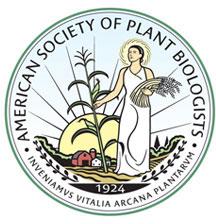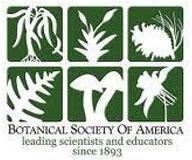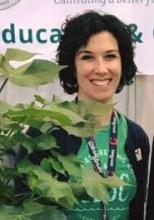Plant Biology
The study of plants and their interactions with the environment.
Members of the American Society of Plant Biologists and the Botanical Society of America have worked with CourseSource to create a Learning Framework for the Plant Biology course. The table below lists the learning goals and objectives that the Societies agree any undergraduate biological sciences major should know about Plant Biology by the time they graduate.
The following people worked to develop this societies-approved Plant Biology Learning Framework:
Kathleen Archer (Trinity College), Erin Dolan (University of Georgia), Roger Hangarter (Indiana University), Ken Keegstra (Michigan State University), Judith Skog (George Mason University), Susan Singer (Carleton College), Neelima Sinha (UC Davis), Anne Sylvester (University of Wyoming), and Sue Wick (University of Minnesota).
Download the Plant Biology Learning Framework
American Society of Plant Biologists
The American Society of Plant Biologists was founded in 1924 to promote the growth and development of plant biology, to encourage and publish research in plant biology, and to promote the interests and growth of plant scientists in general. Members spanning six continents work in academia, government laboratories, and industrial and commercial environments. ASPB plays a key role in uniting the international plant science disciplines.

Botanical Society of America
The Botanical Society of America (BSA), founded in 1893, is committed to sustain and provide improved formal and informal education about plants; encourage basic plant research; provide expertise, direction and position statements concerning plants and ecosystems; and foster communication within the professional botanical community and between botanists and the rest of humankind through publications, meetings and committees.
Course Editor(s):
Plant Biology Learning Framework
Society Learning Goals
Articles
Information Processing/Signal Transduction
How do plants detect, process, and interpret information from the environment?
Sample Learning Objectives- Construct a representation of a molecular receptor for a physical or biological signal that clearly shows how the signal is detected and how information is conveyed from the receptor to the plant cell.
- Compare and contrast a signaling pathway that leads to the activation of a cytosolic enzyme and a pathway leading to changes in gene expression.
- Choose a stimulus that has an immediate response in a plant and a stimulus that results in a response days or weeks later; compare and contrast the information processing in the two examples.
- Diagram how a signal from a plant is perceived and acted upon by another plant.
- Compare and contrast how a plant detects, processes, and interprets information from an herbivore and a pathogen.
- Provide examples of how herbivory alters plant growth.
Evolution, Natural Selection and Adaptation
What evidence shows that different species are related?
Sample Learning Objectives- Using gene trees, support the argument that plants have many genes and gene families in common with all other organisms.
- Analyze the structural and biochemical evidence for the claim that a single endosymbiotic event between a eukaryotic cell and a cyanobacterium was ancestral to all chloroplasts, including chloroplasts in algal groups.
- Formulate an evolutionary hypothesis that accounts for the both the similarities and differences among the chloroplasts of red algae, brown algae, green algae, and land plants, including differences in the number of membranes.
- Draw a generic plant life cycle indicating the role of meiosis and mitosis in establishing multicellular haploid and multicellular diploid stages.
- Contrast the relative size of the multicellular haploid stage in mosses, ferns, and angiosperms.
- Use a computational phylogenetic tool and DNA sequences of one or more genes to predict the evolutionary relationships among major plant clades or between plants and other organisms.
How does variation among plants affect survival and reproduction?
Sample Learning Objectives- Compare the relative contributions of recombination, mutation, hybridization, and polyploidy to plant diversity.
- Explain the biological constraints for hybridization and polyploidy to successfully increase plant diversity.
- Explain how epigenetic phenomena such as DNA methylation and histone modification lead to phenotypic variation among plants that are otherwise genetically identical.
- For various species that exhibit a range of diversity, predict some possible outcomes of expansion of their distribution due to climate change.
- If a new pathogen or herbivore is introduced, predict possible outcomes for a plant species, relative to its diversity.
- Categorize symbiotic relationships that have adapted plants to life in a terrestrial environment.
- Compare strategies that have evolved for population migration and dispersal in mosses, ferns, gymnosperms, and angiosperms.
- Select and evaluate an adaptation in plants for retaining water while facilitating gas exchange.
- For an aquatic plant, select, and evaluate an adaptation for retaining gases needed for photosynthesis.
- Compare structures and their modifications in desert plants from the southwestern U.S. and South Africa.
Organization of Matter and Energy Flow
How do plants obtain and use matter and energy to live and grow?
Sample Learning Objectives- Create a diagram showing how inorganic carbon is assimilated into organic compounds in plants and overlay this with the flow of energy through the plant.
- Trace the path of movement of inorganic nutrients from soil into the aboveground part of the plant.
- Compare the roles of mycorrhizae and root nodules in the uptake of inorganic materials in plants.
- Identify the two inorganic molecules that are used to produce the majority of a plant’s mass, and indicate their sources.
- Explain how the availability of soil microorganisms has supported or limited the growth of economically important plants.
- For a terrestrial ecosystem, analyze the flow of energy among organisms.
- Explain why plants can grow in a closed terrarium.
- Choose a class of organic compounds other than sugars and, in general terms, explain the carbon and energy sources for synthesis of these materials.
Plant Genetics and Variation
Why do individuals of the same species vary in how they look and behave?
Sample Learning Objectives- Identify a trait in a natural population of plants, then collect and analyze phenotypic data to determine how much the trait varies.
- Analyze data from an online repository of gene expression data to determine how genetic differences or environmental cues affect patterns of gene expression.
- Design and conduct an experiment to compare the expression of a gene of interest under different environmental conditions.
- Predict differences in gene expression in mutant versus wild-type plants based on the function of the gene.
How are characteristics of one generation related to the previous generation?
Sample Learning Objectives- Design an experiment to determine the ploidy of a plant tissue.
- Compare the amount of genetic variation in the offspring of a plant that self-fertilizes and a plant that reproduces asexually.
- Select an example of within species hybridization (e.g., hybrid corn) and explain why this can result in desirable agricultural traits.
- Diagram the flow of chromosomes from plants of two different species that hybridize to their offspring; construct an argument for whether the offspring will reproduce.
- Compare the genetic diversity of the offspring of a plant that is reproducing sexually versus asexually.
- Select a crop plant that is the result of hybridization and subsequent polyploidy (e.g., wheat or banana) and discuss how polyploidy corresponds with important agricultural traits.
Plants and Society
What is biodiversity, how do humans affect it, and how does it affect humans?
Sample Learning Objectives- Analyze data from a recent paper on ecosystem biodiversity and evaluate the authors’ conclusions.
- Using Long Term Ecological Research (LTER) data sets, examine historical and current biodiversity data for a particular region and illustrate how the physical environment and biodiversity have changed as a result of human activity.
- For a given crop plant (corn, Brassica, wheat, soy, potato, tomato, bean, banana, etc.) compare its structure, reproduction, genetics, and adaptation relative to its wild ancestors.
- Select a crop plant (e.g., corn, rice, potato) and trace the evolutionary changes that occurred through human domestication of the wild relative.
- Compare the size, distribution, and culture of a human population before and during the introduction of agriculture.
- Compare the size, distribution, and culture of a human population as agriculture became more sophisticated after 1900.
- Advancing Global Learning Through a Collaborative Online International Learning (COIL) Module on the United Nations Sustainable Development Goals (UN SDGs)
- Role of Crop Genetic Diversity on Pathogen Impact: The Tale of Two Pathogens
- Developing Data Literacy Skills and Connecting the Student Experience in the Classroom to the Community Through Biodiversity Projects
- Expanding the Reach of Crop Plants for Food Security: A Lesson Integrating Non-Majors Students Into the Discussion of Food Diversity and Human Nutrition
Plant Structure and Function
How do structures of plants enable life functions?
Sample Learning Objectives- Compare and contrast the structures by which vascular and non-vascular plants obtain and retain water, allow for gas exchange for photosynthesis, and allow for long-distance internal transport of water.
- Map onto a phylogenetic tree of plants the locations where innovations for acquiring water, retaining water, exchanging gases, upright stature, and reproduction in the absence of swimming sperm arose.
- Analyze structural and anatomical features that optimize photosynthesis under various environmental conditions such as shading, water deficit, or high temperature.
- Contrast the primary cell wall component of plants, fungi, and bacteria.
- Analyze the roles of cellulose and cell wall matrix components in support, growth, and cell-cell recognition as well as protection against pathogens.
- Categorize defense mechanisms into structural, constitutive biochemical, and induced biochemical responses, evaluating the cost and benefits of each.
- Plants have conducting tissues that transport water, carbohydrates, and nutrients through both passive and active mechanisms.
- Compare and contrast the long distance transport of carbohydrates with that of water and nutrients in a plant.
- Diagram the pathway of carbohydrate transport from a source to a sink, indicating where active transport is required.
- Categorize plant structures and their particular features that facilitate dispersal of the plant in the environment.
- Select a plant structure that is capable of movement and analyze the features that enable it to move.
Plant Growth and Reproduction
How do plants grow and develop?
Sample Learning Objectives- Explain when and where in the plant meiosis occurs.
- Categorize examples of asexual reproduction based on the plant structures involved.
- Select a plant and diagram the contributions of the gametophyte(s) to sexual reproduction.
- Support the claim that plants continue to develop and differentiate new structures after formation of a multicellular structure by drawing and identifying regions of a plant with persistent meristem activity.
- Using examples, explain how shoots and roots are repeatedly added to a plant through meristem activity.
- Categorize internal and external cues based on their effects on plant form.
- Draw a diagram that represents the effect of a specific wavelength of light on plant form; include photoreceptors, signal transduction, gene expression, and morphological change in the diagram.
- Draw a diagram that illustrates the effect of gravity on plant form; include receptors, signal transduction, gene expression, and morphological change in the diagram.
- Identify the categories of plant hormones and provide examples of their effects on growth and development.
- Compare and contrast the production of and response to a steroid hormone in a plant and an animal.
- Diagram how internal and external cues integrate to contribute to mechanisms of cell expansion.
Plants in Ecosystems
How do plants interact with the living and non-living environment?
Sample Learning Objectives- Compare the relative contributions of plants and another photosynthetic organisms like lichens or terrestrial algae to production of food and oxygen on land.
- Evaluate the statement that plants are the foundation of terrestrial ecosystems.
- Chose an example of an interaction between a plant and another organism and elaborate on the ways in which they interact to the benefit of one or both organisms.
- Choose a plant metabolite that affects other organisms in the ecosystem and explain the mechanism of the effect.
- Evaluate the geological evidence that plants contributed to glaciation (i.e., ice ages).
- Contrast the general properties of plants, soil, and fauna on Earth at the time that plants first colonized dry land with the general properties of those organisms today.
- Analyze the progression of changes in plants and other organisms that occur after a volcanic eruption or a major wildfire.
- Space Mission Ecology: Making Connections Among Science Disciplines Through the Lens of a Unique Plant
- Advancing Global Learning Through a Collaborative Online International Learning (COIL) Module on the United Nations Sustainable Development Goals (UN SDGs)
- Role of Crop Genetic Diversity on Pathogen Impact: The Tale of Two Pathogens
How do matter and energy move through an ecosystem?
Sample Learning Objectives- Evaluate the claim that energy first enters the ecosystem through photosynthesis; consider relative to chemosynthesis.
- Create a diagram that illustrates the flow of oxygen and carbon dioxide through photosynthesis and respiration in an ecosystem.
- Diagram the flow of water through an ecosystem, incorporating photosynthesis, respiration, and transpiration.
- Estimate the impact of a reforestation and/or deforestation project of 1 million hectares on the global carbon cycle.
- Evaluate the nitrogen runoff into watersheds from fields of nitrogen-fixing crops versus fields of crops fertilized with inorganic nitrogen.
- Evaluate a current research paper on how plant diversity affects ecosystem resiliency after a disturbance.
- Consider a situation in which population size or distribution of plants is altered due to changes in climate, herbivore populations, or invasive species, and predict how this might affect other aspects of the ecosystem.
- Space Mission Ecology: Making Connections Among Science Disciplines Through the Lens of a Unique Plant
- Exploring the Complexities of Photosynthesis Through a Comic Strip
- Using Place-Based Economically Relevant Organisms to Improve Student Understanding of the Roles of Carbon Dioxide, Sunlight, and Nutrients in Photosynthetic Organisms




